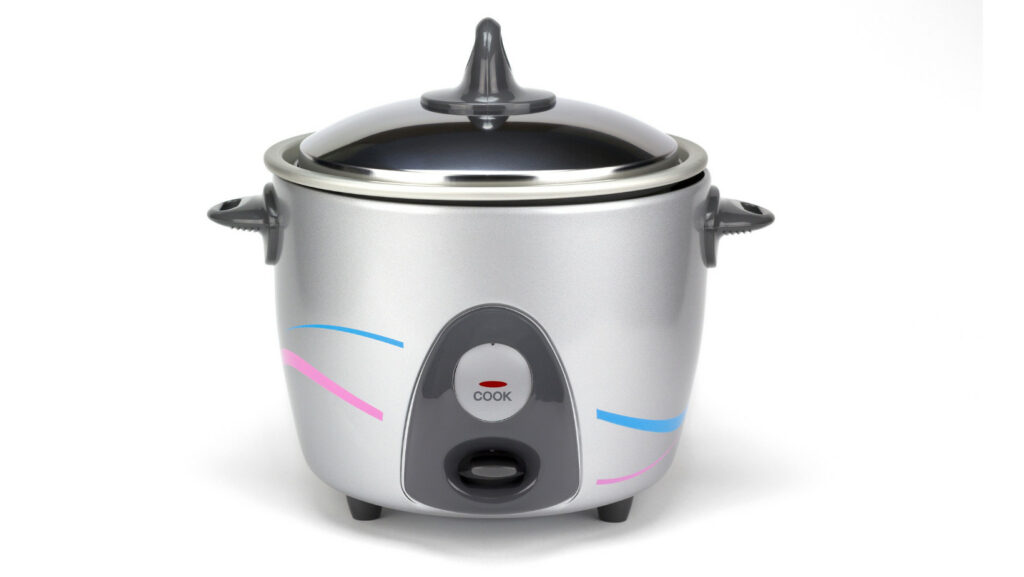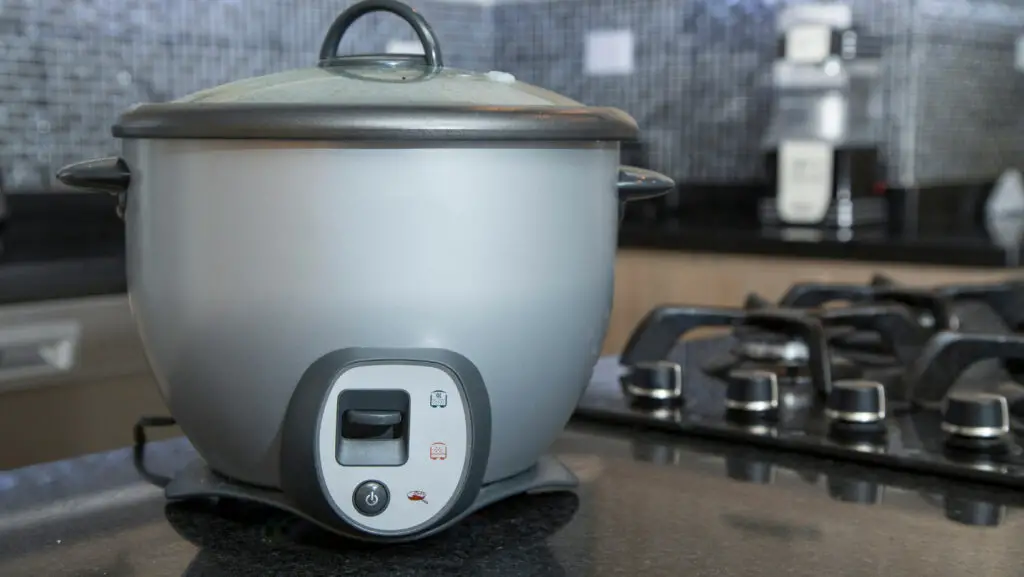As an Amazon Associate we earn from qualifying purchases.
How to clean a rice cooker is not as easy as it sounds. Rice cookers are generally pretty small and don’t take up much space, but they can be tough to keep spotless sometimes because of the nooks and crannies in which food particles can get stuck. If you like your kitchen appliances looking nice, here are some tips that will help you to properly clean your rice cooker so that it will always look its best.
Contents
Steps for Cleaning a Rice Cooker
- Start by unplugging the rice cooker and emptying any remaining grains or food particles inside.
- Next, take the inner lid off the rice cooker and set it aside with any removable parts attached to your rice cooker.
- Clean the inside of the rice cooker using a damp cloth or sponge if there is food stuck on it; otherwise, use an abrasive cleaner only if necessary.
- Let all parts air dry before you reassemble the rice cooker.
- Finally, plug your cleaned rice cooker back in to ensure that it is working correctly, and enjoy your freshly cleaned appliance.
Advantages of Cleaning a Rice Cooker
There are several advantages to cleaning a rice cooker regularly. By taking the time to clean your rice cooker after each use, you can;
- Prevent food particles from building up and becoming difficult to remove.
- Keep your kitchen appliances looking nice and tidy.
- Ensure that your rice cooker continues to operate correctly.
Cleaning a rice cooker is an integral part of being a responsible and organized cook, consumer, and household member. Proceeding with a little extra time to clean your kitchen appliances can save you from having to replace them altogether due to the accumulation of food particles that may have been difficult or impossible to remove otherwise.

Disadvantages of a Dirty Rice Cooker
There are a few potential disadvantages of not cleaning your rice cooker regularly. The first is that food particles and grease can build up over time and cause the appliance to smell bad. Another disadvantage is that uncleaned rice cookers can be a breeding ground for bacteria, so it’s essential to take the time to clean them properly regularly. Finally, if food particles are allowed to accumulate inside the rice cooker, they can cause the appliance to malfunction or even catch on fire.
Tips and Tricks
There are a few tips and tricks that can make the process of cleaning your rice cooker a bit easier. The first is always to unplug the appliance before you start cleaning it. This will prevent you from accidentally getting shocked. Second, try to clean any food particles or grease off the appliance as soon as possible after they accumulate. This will make the cleaning process much more straightforward. Finally, you can use lemon juice as a cleaning agent for your rice cooker. Squeeze some of the juice into a bowl and submerge the inner lid of the rice cooker in it overnight. The acidity present in the lemon will help break the fat better than using water alone.
Things To Avoid
There are a few things that you should avoid doing when cleaning your rice cooker. First, never use harsh chemicals or abrasive cleaners to clean the appliance. This can damage the surface and make it more difficult to clean in the future. Second, do not submerge the rice cooker in water. This can cause electrical components to malfunction and lead to rusting over time. Finally, do not clean the rice cooker while still plugged in. This can be dangerous and can also cause damage to the appliance.
How to Store and Dry
If you have finished cleaning your rice cooker, you may want to consider storing and drying it properly. This will help keep it in good condition and last longer.
To store a rice cooker, make sure it is completely dry. You can do this by air drying it for a few hours or by using a hairdryer on the low setting. Once dry, put the inner lid and other removable parts in a plastic bag and store them in a cool, dry place.

To dry a rice cooker, you should unplug it and let it cool down completely. Once cool, use a hairdryer on the low setting to dry any remaining moisture inside the appliance. Be sure to dry all the parts, including the removable lids and power cord. Once it is completely dry, you can put any removable parts into a plastic bag and store them as described above.
It will help if you use caution when drying your rice cooker. Make sure that you don’t pierce or puncture any of the internal parts, as this could cause it to malfunction. Also, be careful not to hold the hairdryer too close to the appliance, or else you may damage its surface.
How Often Should It Be Cleaned?
A rice cooker should be cleaned once a week to ensure that it remains in optimal condition. It is best to clean the rice cooker after every use, although this isn’t always feasible due to time constraints or busy schedules. You can avoid replacing the appliance prematurely by cleaning your rice cooker regularly.
Advantages of Proper Storage
There are several advantages of storing and drying your rice cooker properly. First, your rice cooker will last longer if stored and dried correctly. Another advantage is that this can also help reduce your energy bills because your rice cooker will be powered off for a more extended period. Finally, it is wise to store the appliance correctly. This will ensure that water or moisture doesn’t damage the cooker.
Conclusion
Cleaning a rice cooker is essential for keeping it in good condition and ensuring that it functions properly. A few tricks to make the process easier include unplugging the appliance before cleaning, cleaning food particles or grease off immediately, and using lemon juice to break up grease. There are also things to avoid when cleaning, such as using harsh chemicals or abrasive cleaners, submerging in water, or cleaning while plugged in. Finally, after cleaning your rice cooker, you should store and dry it properly. This will help keep it functioning well for longer and reduce the chances of it getting damaged by moisture.
